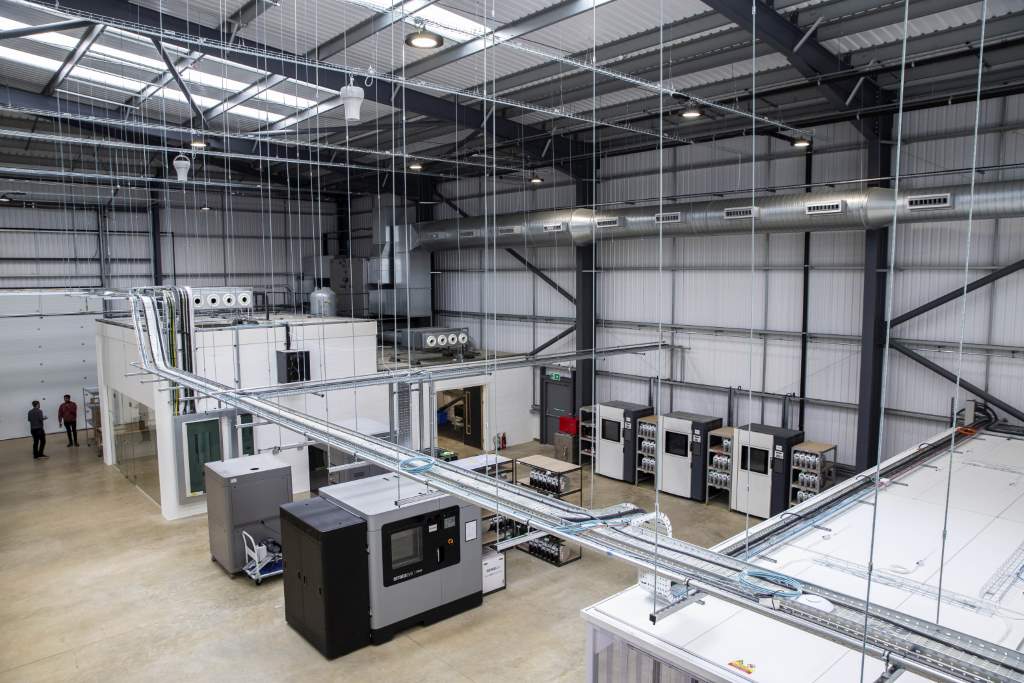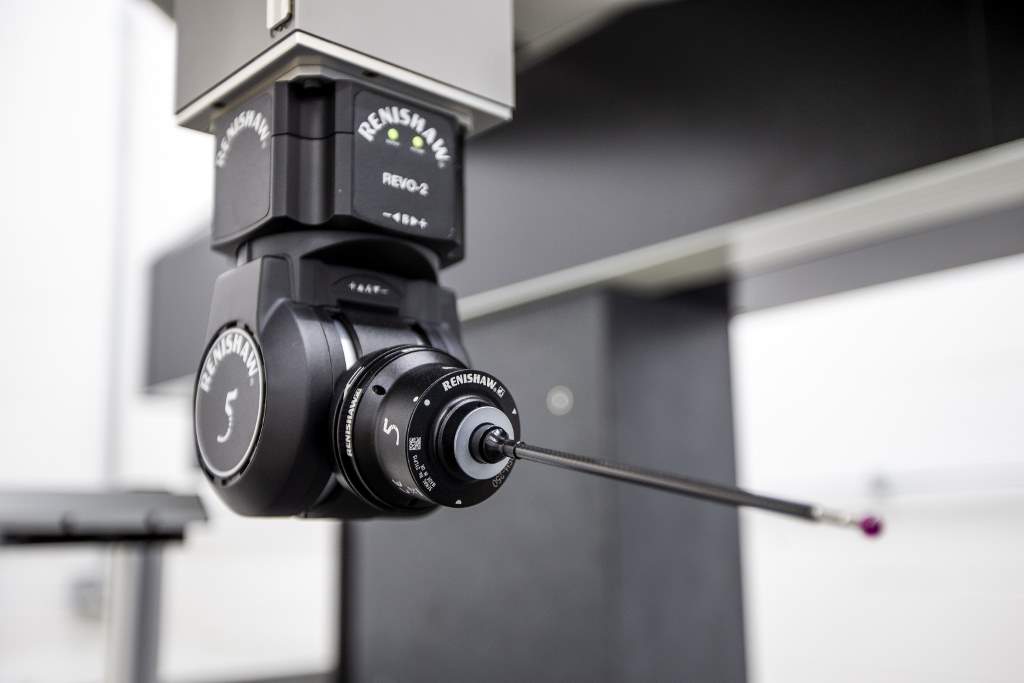Additive and the future of rotary

While additive manufacturing has been part of the aerospace industry for over 20 years, the processes, technologies and materials are reaching an important point of maturity. Digital Manufacturing Centre’s CEO, Kieron Salter discusses the latest applications and the state of additive in modern rotorcraft production.
In 2029, the global helicopter market is expected to reach a value of $74 billion, up from $49 billion in 2022, expanding at a CAGR of 6.24%. This sustained growth is complemented by a rise in new aircraft and production technologies, many focused on improving performance and fuel efficiency, while reducing total lifecycle costs. An area of keen interest for both OEMs and MROs is additive manufacturing (AM).
“The helicopter industry is ideally positioned to take advantage of AM and the myriad of demonstrated benefits it provides,” begins Salter. “While, broadly speaking, the aerospace industry innovates slowly, AM has been part of the picture for decades and has now reached a point of technological maturity where it is a viable series production method. With the ability to produce parts that cannot feasibly be made by any other means, intelligently optimising geometries and part shapes, it offers a step-change in part performance over conventional processes.”
Additive advantages
Salter adds that the relatively low volumes of helicopter components, coupled with the demand for parts with consistently high quality and performance, make AM the ideal production solution. It has already been shown to reduce costs in substantial fixed-wing aerospace programmes, with the use of 3D printed components in the Boeing 787 estimated to save approximately $2-3 million per aircraft.
“Within the helicopter sector – and indeed, wider aerospace – one of the primary drivers behind AM adoption is to reduce timescales. If you are able to reduce the lead-time of components for prototypes and production aircraft, that can make a substantial difference over the span of development and service. I think perhaps one of the biggest drivers, however, is AM’s ability to enable lightweighting while producing more compact and complex components – often at a reduced cost per part and consolidating several components into one.
“There is also the simplification of translating CAD designs into real-world parts, with the limits of tooling almost removed from the equation. This is an unfamiliar level of design freedom for aircraft development engineers – one that allows for parts to have highly-complex internal structures that can be topologically optimised for loads and stresses. Numerous high-profile aerospace projects have already demonstrated the immense potential for part number and cost reductions.”
An example highlighted by Salter is General Electric’s T901 turboshaft engine, destined to replace the T700 engines found in the AH-64 Apache and H-60 Black Hawk. As part of the US Army’s Improved Turbine Engine Programme, the new engine was to offer 50% more power and 25% better fuel efficiency while also cutting weight and reducing production costs by 35%.
An excellent example of AM’s ability to easily consolidate parts, GE was able to combine all 50 parts of the engine’s lubrication system into a single component that was 20% lighter than its conventionally-produced equivalent. All of this while also providing development timescale advantages and reduced production cycle times.
“This image of AM prototype parts that bear little relevance to production is antiquated. The reality is that modern metal and polymer AM components are end-use ready and available in sufficient volume within required timescales. Following initial prototyping and iterative development, the part you put into production can be manufactured in exactly the same way. So, not only is development accelerated with fast prototyping, but the transition to production is seamless. That is extremely compelling in an industry where things tend to progress slowly, overrun and absorb resources.”

Despite wide interest, demonstrated success and commercial viability within the helicopter sector, existing approaches are proving hard to shift. Forward-thinking companies are realising the possibilities of AM when compared to traditional manufacturing processes. Salter says many aerospace companies are open to the idea of production AM, but are not sure of the best way to implement or integrate it with existing practices.
“We have found that the vast majority of aerospace engineers and businesses acknowledge the importance of AM in the industry’s future, but are not yet exploiting its benefits today. In many cases, they may not see how it could enhance the programme they are working on right now. As an engineering-led commercial AM production centre, a large part of what we do is engineering for application, rather than simply printing parts.
“The main challenges are certification and data for confidence in design allowables. This is critical to increasing AM adoption at the design authority stage. At the DMC, we understand the unique requirements of aerospace and put in the effort to achieve certification and generate the data required by design authorities, like fatigue information and mechanical properties. For aerospace businesses, working with AM experts from an early stage can deliver far greater outcomes, allowing them to truly leverage all of the technology’s advantages.”
It’s a material whirl
Indeed, the variety of metal and polymer materials available for AM production grows by the day. From aerospace superalloys to advanced thermoplastics. It’s more than directly manufacturing parts, though, Salter also points out that AM goes hand-in-hand with the rise of advanced composites.
“While the lead-times and expense of composite tooling have been a restriction to composite use in rotorcraft programmes, AM can provide near-instant tooling that is easily replicated, replaced or modified at short notice. Aerospace composite companies may spend months and thousands to develop lay-up tools, mandrels or cores, something that AM can now achieve for far less cost and within a matter of hours. Alongside composite tooling, AM is also perfect for jigs and fixtures for many of the same reasons.”

It is not just aircraft production that is set to benefit from advances in AM, so too will the supply chain of OEMs, Tier 1s and MROs. Salter believes that AM can mitigate many of these factors, or at the very least ensure the availability of operationally critical parts.
“While OEM and Tier 1 interest is clear and growing, AM is also receiving a lot of attention from MROs. With extensive maintenance and operational requirements, rotorcraft servicing is part-intensive. The ability to make these parts quickly, with minimal requirements for spare stock, is an interesting proposition for these businesses. The idea that parts could be produced according to upcoming maintenance and overhaul schedules, or in a matter of hours for repairs is exciting.
“Aging programmes can also be safely and cost-effectively supported with on-demand spares. Given the expense of tooling and low-volume production for older platforms, the ability to efficiently produce spare parts when required is ideal. Supporting older and legacy systems is often seen as a substantial resource sink, but additive allows aircraft to be supported for longer without any of the traditionally recognised costs. If a customer requests a discontinued or out-of-stock part that was originally produced using additive, you have a lead-time of just a few hours.”
Given the increasing emphasis on lightweighting, fuel efficiency and minimisation of operational costs, there is clearly an important opportunity for AM within the rotorcraft sector. While many are already onboard with the concept, few seem to understand that the technology is production-ready today and can viably accelerate development timescales and drastically simplify the transition from prototype to production.












